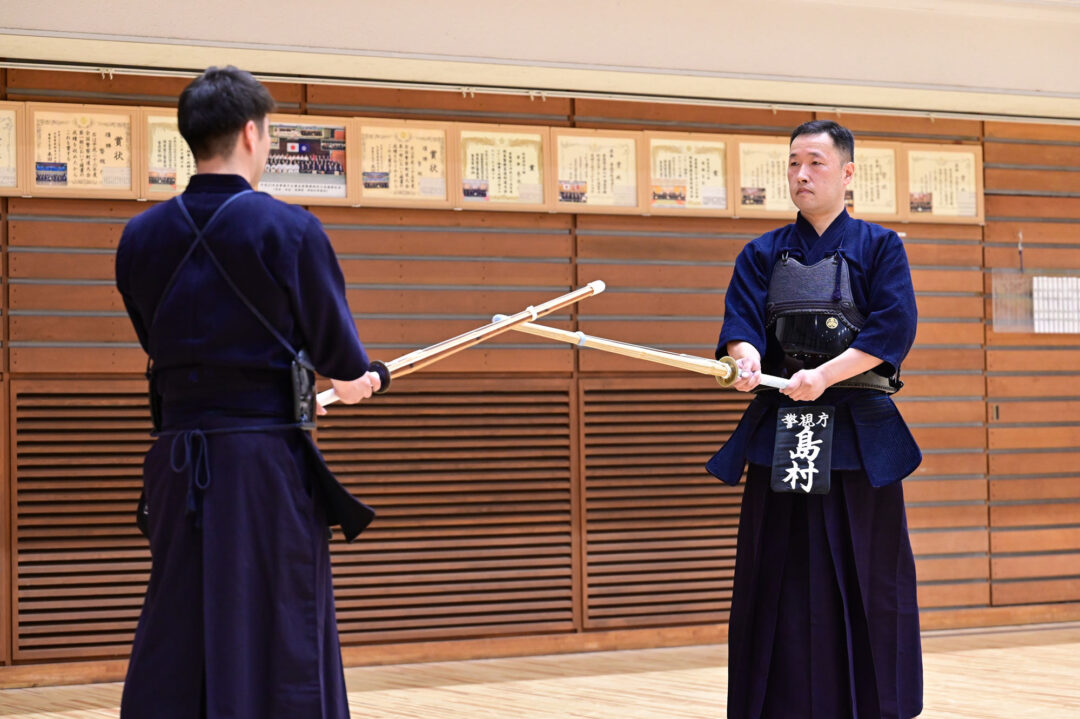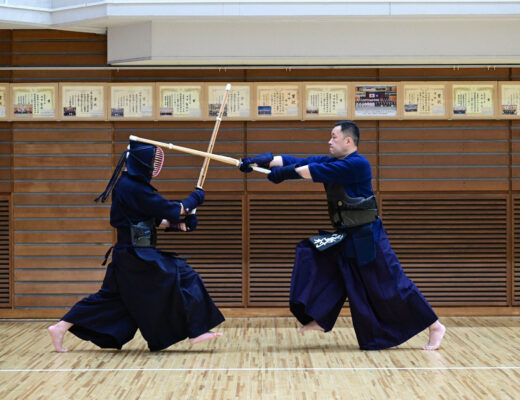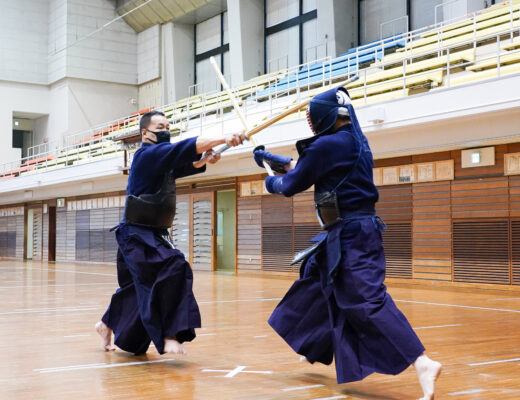2024.1 KENDOJIDAI
Composition: Teraoka Tomoyuki
Photography: Nishiguchi Kunihiko
Translation: Pepijn Boomgaard, Sato Mariko
Shimamura Tsuyoshi, currently a Kendo instructor for the Tokyo Metropolitan Police Department, has always been very particular about his Kamae. “I believe that there are two types of Kamae, Migamae* and Kokorogamae*, and that when these two are in place, it will lead to the complete striking that everyone applauds,” he said. He spoke to us about his commitment to Kamae and its connection to striking, based on his past experiences.
*Migamae: A physical posture where one is conscious of one’s whole body, and is ready to respond to the opponent’s movement.
*Kokorogamae (Kigamae): The state where one’s entire body is alert and ready to react to the moves of the opponent’s body and mind preceding a strike.
Shimamura Tsuyoshi (Kyoshi 8th Dan)

A Childhood Admiration for the Metropolitan Police Department
Correct Kamae is the path to victory
Since I was very young, I have been particular about Kamae and I strongly admired the Metropolitan Police Department Kendo.
My admiration began when I went to see the All Japan Kendo Championship with the Sensei of my dojo. I was in elementary school at that time. The winner of that championship was Nishikawa Kiyonori Sensei, who later became the chief instructor of the Tokyo Metropolitan Police Department. I still vividly remember my Sensei telling me, “You have a big body, so you should imitate Nishikawa Sensei’s Kendo.” Later, I had the opportunity to meet Nishikawa Sensei at a tournament. As I won that tournament, he took a photo with me.
I had such a strong yearning for the Metropolitan Police Department Kendo that I wrote in my elementary school graduation book, “I want to work for the Metropolitan Police Department.” Their beautiful, strong and correct Kendo is the foundation of my Kendo.
When I actually started working for the Metropolitan Police Department, I began to understand why Nishikawa Sensei and all the other Sensei of the Metropolitan Police Department have such beautiful Kamae. What they all have in common is an excellent posture. No matter how fast or powerful I try to strike, my Kensen never reaches them. The center is taken by their Seme, and before I know it, I am already struck. As I repeated this experience, I became even more aware of my Kamae, thinking that I should be the same way. I believe that everyone goes through this kind of experience and reaches the Kendo that is said to be “typical of the Metropolitan Police Department.”
Looking back on my years as a competitor when I was seeking to win, there were of course times when I would try to hit even if my Kamae or stance broke. However, after I turned 30 years old, I realized that I was taking a detour. Most of the times I was struck, it was when I raised my left fist and struck from the so-called Midokoro-yoke* stance. Instead of striking from a broken position, I would first think about not breaking Kamae in order to win. After this change in mindset, I began to think even more about striking from the correct Kamae.
*Midokoro-yoke: Raising the left fist to avoid Men, Kote, and right Do
Recognized the importance of Kokorogamae during the pandemic
The rest of this article is only available for Kendo Jidai International subscribers!




